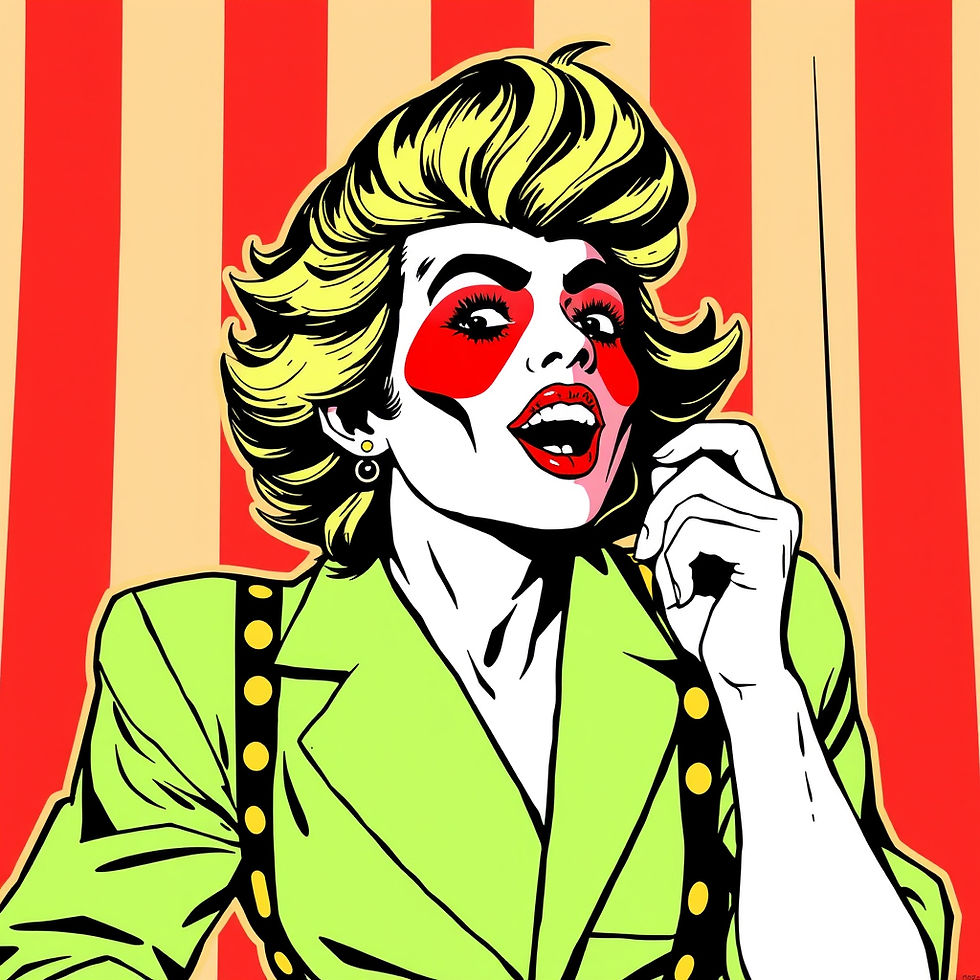Side characters who steal the show (and how to write them)
- Krysia S.
- Aug 8
- 3 min read
We all know those characters.
The best friend, the rival, the sibling, the snarky coworker.

They step into the scene with a single line and somehow… they own it. Sometimes they’re funnier. Sometimes they’re wiser. Sometimes they’re more unfiltered or vulnerable than the main character.
And somehow, they linger in the reader’s mind just as much—if not more—than the protagonist.
So what makes a side character unforgettable? And how do we write them in a way that doesn’t just entertain—but actually strengthens the story?
what makes a secondary character “steal the show”?
A memorable side character doesn’t just exist to support the protagonist.They feel like they could walk off the page and star in their own novel.
Here’s what they usually have:
1. A distinct voice or presence
Whether it’s a quirky way of speaking, a signature look, or an energy that jumps off the page—these characters are hard to ignore.
Think:
Mr. Bennet (Pride and Prejudice)—dry, detached, and quietly mischievous.
Ron Swanson (Parks and Recreation)—gruff, hilarious, and paradoxically full of heart.
2. A goal of their own
They want something. It might align with the protagonist’s goal—or clash with it. But they’re not just orbiting someone else’s story. They’re living.
3. Contrasts or complements the protagonist
They either challenge the hero (by calling them out, pushing them forward, or getting in their way)…Or they reflect the hero (acting as a mirror for the hero’s fears, growth, or suppressed qualities).
4. An emotional truth
The best side characters aren’t just funny or fierce. They reveal something real. Their vulnerability, trauma, or passion gives them weight.
how to use side characters to deepen your story
Here’s the secret: side characters shouldn’t just exist to serve the plot.They should reveal something about your main character—and help shape their arc.
Ask yourself:
How does this character push my protagonist outside their comfort zone?
What does this character represent that my protagonist needs to face or understand?
What would be missing in the story’s emotional journey without them?
Great side characters act as foils, catalysts, companions, or cautionary tales.They move the story—and the protagonist—forward.
writing tips for unforgettable side characters
give them a life outside the page
Even if it’s not shown directly, you should know what they’re doing when they’re not with the main character. Give them hobbies, dreams, opinions, regrets.
avoid making them too perfect (or too flat)
The wise mentor who always knows what to say? The comic relief who only cracks jokes? Give them contradictions. Make them human.
use them for contrast
Pair an idealist with a cynic. A rule-follower with a rebel. A control freak with a free spirit. This contrast brings natural tension and chemistry.
let them surprise the reader
Maybe the snarky sidekick makes a quiet, devastating confession. Maybe the comic relief solves the plot’s emotional riddle. Give them layers.
examples of side characters who shine
Inej Ghafa in Six of Crows – A quiet, religious acrobat who’s lethal, loyal, and spiritually grounded. Her moral clarity challenges Kaz, the ruthless protagonist.
Rue in The Hunger Games – Young and gentle, Rue softens Katniss and brings out her protective instincts. Her death marks a turning point.
Samwise Gamgee in The Lord of the Rings – Loyal, earthy, and underestimated—Sam carries Frodo (literally and emotionally) when Frodo falters.
A powerful side character can steal the show—But only when they feel like a real person with a purpose.
Whether they’re a rival, mentor, best friend, or wildcard, the best secondary characters reflect and challenge your protagonist, enriching the story's heart.
So the next time you’re writing a scene, don’t just ask, “What is my main character doing?”Ask, “What’s the side character revealing, resisting, or risking in this moment?”
You might just create the next fan favourite.




Comments